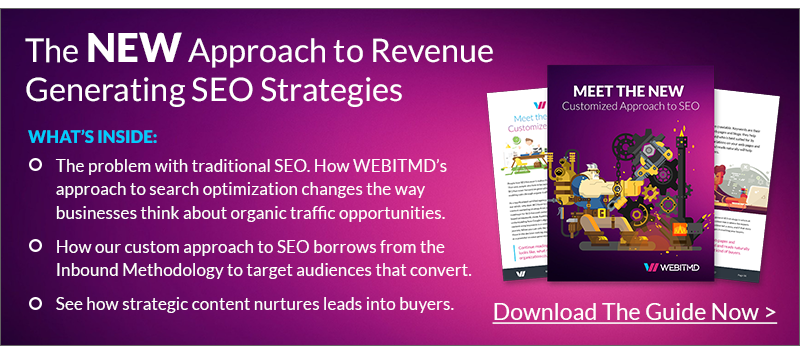SEO is the most popular digital marketing strategy, and one that can continue to work well after services are paused, or stopped all together. That is if your content is SEO friendly. But what does that mean?
This article is meant for readers who are new to the world of SEO, and simply want to know why, and how, to write content that will rank. But ranking is not the main goal here. Businesses should have the objective to rank their content for their target buyers, and ensure their landing pages are optimized to convert visitors into buyers. But the first step it to make your content ideal for SEO, and capable of converting readers into buyers.
What does SEO Friendly Content Mean?
The definition of SEO friendly content has changed significantly. A few years ago it meant stuffing content with keywords and broadcasting links in hundreds of directories.
But this practice no longer works and triggers spam alerts. Going into 2019 means SEO friendly content is written to satisfy Google’s AI and machine learning algorithm components while writing about topics that matter the most to your target buyers. But really, these are one in the same, as writing content for people automatically makes it SEO friendly and creates an opportunity for conversion optimization.
Simply put, most internal SEO teams assembled by organizations lack to skills and tools to successfully run such a strategy. This is why more brands form solid partnerships with top SEO agencies that have the experience and tech tools to run efficient, growth-driven organic search strategies.
1. Know Your Target Buyers
Before you can create content that ranks for your ideal customers, you need to have a clear understanding as to who your buyer audience is, free from assumptions. One of the biggest mistakes companies make is assuming to know why their target buyers are, why they seek their products and services, and how their products serve as solutions to their needs. Worse yet, many brands don’t even grasp this logic. Here are some ways to gain an in-depth understanding of who your target buyers are and what makes them tick so you can create buyer personas, based on factual data, that will help you create the right content that ranks for the right searchers most likely to convert to sales:
Your Sales Team – Marketing and Sales need to talk to one another. Your sales team has heard it all; why people buy, why they don’t buy, their common pain points, and how various products provide solutions to customer needs. Collect as much as this data as you can to create realistic buyer personas.
Emails – Emails provide a plethora of data. Potential clients, current customers and people who never made a purchase have likely emailed you over the years asking questions about your products. Create a spreadsheet where you can log these queries. Pay attention to seasonality, trends and appropriate this data into your content strategy.
Surveys – Create surveys that tap into your customer’s buying mindset. Make sure the questions attempt to uncover the process they go through when making a purchasing decision, what features they care about the most, which ones they dislike, why they bought your products, and why they didn’t.
Once you have collected all the possible data, create a system that will allow you to continue collecting data on your buyers, and continue optimizing content through this highly agile process.
2. Use SEO Keywords that Actually Enable Sales
Most organizations utilize SEO tools to identify industry-related keywords that get the highest search volume. Their logic is this: if you can rank content for keywords that get the most clicks, your chances of converting clicks to customers increases.
However, this logic is deeply flawed. Broad keywords that lack any audience targeting or context relevant to the buyer’s needs may get lots of clicks but few conversions because the content is too general to help people make a purchasing decision. Furthermore, people who search for broad keywords use search terms that reflect their readiness, and such broad terms indicate they are in the discovery phase of the buyer’s journey where they don’t even have a clear understanding of their problem or what it takes to solve it. Therefore, even if you can rank for these keywords it needs to be done using content that will nurture readers to the next phase of the buyer’s journey.
That said, your keywords need to reflect each buyer persona and their stage in the buyer’s journey. This will require creating longtail keyword variations that reflect the buyer’s need within an appropriate context. These keywords may not get much search volume, but they do two things: (1) they rank for people most likely to convert to the next stage in the buyer’s journey or make a purchase, and (2) they provide context to broad and widely searched keywords to draw in ideal buyers.
3. Button Up Your Page-Level SEO
In order to host SEO friendly content while making it more accessible to visitors, you need to prep your website’s platform, navigation and web page content to facilitate rankings and user engagement that will likely convert to sales.
This means your page titles, meta descriptions, image ALTs, H tags and the content itself needs to be strategically orchestrated to work together towards achieving the common goal. Google must make sense of your content, as well as who the intended audience is, and the site must make sense to your buyer audience with a clean navigation that helps them find desired information. Internal linking strategies will create a better user experience, and allow “SEO juice” to circulate throughout the site thus helping it grow its domain authority and see ranking improvements.
4. Use Topic Cluster Blog Models
Blogs are more than 70 percent responsible for SEO, and offer additional value for generating revenue. You can make your content strategy more SEO friendly by creating a blog structure that follows the topic cluster model.
This blog structure calls for a set number of general topics and each have a blog cluster of multiple articles addressing unique topics, within specific contexts, with individual titles that feed into a main, general topic. Each blog links internally to others of a similar topic, and each blog links to a pillar page (home page or primary product page). This method improves SEO for two main reasons: first, the topic similarities and internal linking help Google understand the subject matter and context while the links circulate SEO juice, and secondly, the internal linking between blog posts with similar topics help visitors find specific information, thus creating a long dwell time which helps improve SEO results.
Learn How a Modern SEO Approach can Generate Revenue in 2019
Download our FREE guide on the modern approach to SEO, and call us with any questions.










.jpg)



.jpg)





![5 Reports to Elevate Your HubSpot Sales Dashboard [+ Examples]](https://blog.webitmd.com/hs-fs/hubfs/Imported_Blog_Media/6-winning-examples-of-a-hubspot-sales-dashboard-2.png?width=767&name=6-winning-examples-of-a-hubspot-sales-dashboard-2.png)